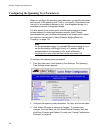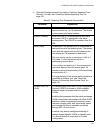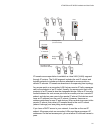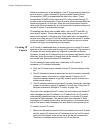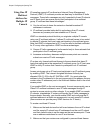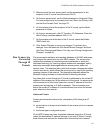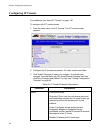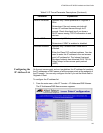Chapter 5: Configuring the Spanning Tree
144
Using One IP
Multicast
Address for
Multiple IP
Tunnels
IP tunneling supports IP multicast and Internet Group Management
Protocol (IGMP). IP multicast provides an ideal way to distribute IP hello
messages. These hello messages are only forwarded to those IP subnets
and IP hosts (such as access points) that participate in the multicast
group. IP multicast has these advantages:
You do not have to know the unicast or directed broadcast IP
addresses in advance.
IP multicast provides better built-in redundancy than IP unicast,
because any access point can establish an IP tunnel.
IGMP is a standard protocol that lets you originate multiple IP tunnels
using one IP multicast address. It allows IP multicast frames to be routed
to remote IP subnets that have hosts participating in the multicast group.
Note that IGMP is independent of IP; it can be used to facilitate multicast
for IP or any other application. IGMP has these advantages:
Causes IP hello messages to be forwarded only to those subnets that
participate in the IP multicast group
Increases redundancy because multiple access points on a remote
subnet can receive IP hello messages
IP routers only forward multicast frames to those subnets that have IP
hosts that participate in the respective IP multicast group. An IP host uses
IGMP to notify IP routers that it wants to participate in an IP multicast
group.
Access points can act as IP hosts and participate in an IP multicast group
by enabling IGMP. The Internet Assigned Numbers Authority has
allocated 224.0.1.65 for the AT-WA750x’s IAPP. You must enter this
address in the IP address list in the root access point (the address list may
contain other IP addresses) and in the Multicast Address field in the other
access points.
If you enable IGMP on the root access point, the root access point uses a
Class D IP multicast address to send IP hello messages through IP
routers to access points on other subnets. If you enable IGMP on remote
IP subnets, intermediate IP routers will forward the IP hello messages to
those subnets. Normally, you should enable IGMP and configure the IP
multicast address in at least one access point on each remote IP subnet.
(Some routers can provide proxy IGMP services for IP hosts.)
To create a multicast IP tunnel
1. Make sure that end devices that will roam between the root IP subnet
and the remote IP subnet have IP addresses from the root IP subnet
and their default router is set the same as the root access point. There
are no address restrictions for non-IP end devices.
2. Make sure that your routers are configured to pass multicast frames.



